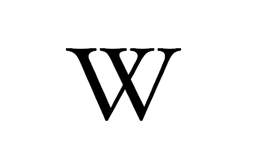La poética de las ruinas en el Siglo de Oro

- Statement of Responsibility:
-
Lara Garrido, José
- Hlavní autor:
- Formát:
-
Journal article
- Jazyk:
-
Spanish; Castilian
- Forma / Žánr:
-
text (article)
- Vydáno:
-
2020
- V:
-
Analecta malacitana: Revista de la Sección de Filología de la Facultad de Filosofía y Letras ISSN 0211-934X Vol. 41, 2020, pags. 9-117
- Předmětová hesla:
- Annotation:
-
This article opens with some general reflections (both classical and contemporary) on the meaning of ruins, and then it addresses the need to devise explanatory paradigms about the different historical periods and poetical sequences. The article takes as its starting point the broad meaning of the concept in Spanish, together with the extensive bibliography existing in the international context, and it favours those studies published in the last decades, as well as those poetical texts and genres unexplored so far. By doing so, the article makes it possible to offer a different historical and exegetical organigram. Examining the data about different traditions and topoi, the article demarcates both the historical sections and the authorial inflections, and it provides a series of paradigms that reveal certain textual gaps in relevant writers and works that have been paid scant attention. The article also explores the far-reaching changes operating in the eighteenth century, including the new view of Rome, the presence of artificial ruins in the English garden, travel books, and the beginning of modern archaeology, resulting from the discoveries of Pompeii and Herculaneum.
| LEADER | 03548nab a22003610u 4500 | ||
| 001 | spart13783 | ||
| 003 | ES-LoD | ||
| 005 | 20230516100051.0 | ||
| 008 | 230516s2020\\\\sp\\\\\\\\\\\\\\\\\\spa\\ | ||
| 022 | \ | \ | |a 0211-934X |
| 041 | \ | \ | |a spa |
| 100 | \ | \ | |a Lara Garrido, José |
| 245 | \ | \ | |a La poética de las ruinas en el Siglo de Oro |c Lara Garrido, José |
| 260 | \ | \ | |c 2020 |
| 520 | 3 | \ | |a This article opens with some general reflections (both classical and contemporary) on the meaning of ruins, and then it addresses the need to devise explanatory paradigms about the different historical periods and poetical sequences. The article takes as its starting point the broad meaning of the concept in Spanish, together with the extensive bibliography existing in the international context, and it favours those studies published in the last decades, as well as those poetical texts and genres unexplored so far. By doing so, the article makes it possible to offer a different historical and exegetical organigram. Examining the data about different traditions and topoi, the article demarcates both the historical sections and the authorial inflections, and it provides a series of paradigms that reveal certain textual gaps in relevant writers and works that have been paid scant attention. The article also explores the far-reaching changes operating in the eighteenth century, including the new view of Rome, the presence of artificial ruins in the English garden, travel books, and the beginning of modern archaeology, resulting from the discoveries of Pompeii and Herculaneum. |
| 538 | \ | \ | |a application/pdf |
| 540 | \ | \ | |a LICENCIA DE USO: Los documentos a texto completo incluidos en Dialnet son de acceso libre y propiedad de sus autores y/o editores. Por tanto, cualquier acto de reproducción, distribución, comunicación pública y/o transformación total o parcial requiere el consentimiento expreso y escrito de aquéllos. Cualquier enlace al texto completo de estos documentos deberá hacerse a través de la URL oficial de éstos en Dialnet. Más información: https://dialnet.unirioja.es/info/derechosOAI | INTELLECTUAL PROPERTY RIGHTS STATEMENT: Full text documents hosted by Dialnet are protected by copyright and/or related rights. This digital object is accessible without charge, but its use is subject to the licensing conditions set by its authors or editors. Unless expressly stated otherwise in the licensing conditions, you are free to linking, browsing, printing and making a copy for your own personal purposes. All other acts of reproduction and communication to the public are subject to the licensing conditions expressed by editors and authors and require consent from them. Any link to this document should be made using its official URL in Dialnet. More info: https://dialnet.unirioja.es/info/derechosOAI |
| 650 | |a general reflections on ruins | ||
| 650 | |a historical poetics | ||
| 650 | |a integrating models | ||
| 650 | |a genres | ||
| 650 | |a diachronic changes of models | ||
| 650 | |a authors | ||
| 650 | |a reflexiones generales sobre las ruinas | ||
| 650 | |a poéticas históricas | ||
| 650 | |a constituyentes modélicos | ||
| 650 | |a géneros | ||
| 650 | |a diacronía y variación de modelos | ||
| 650 | |a autores | ||
| 655 | \ | 4 | |a text (article) |
| 773 | |t Analecta malacitana: Revista de la Sección de Filología de la Facultad de Filosofía y Letras |x 0211-934X |g Vol. 41, 2020, pags. 9-117 | ||
| 856 | 4 | |u https://dialnet.unirioja.es/servlet/oaiart?codigo=8048417 | |
| 995 | \ | \ | |a Biblioteca Nacional de España |
stdClass Object
(
[LEADER] => 03548nab a22003610u 4500
[001] => Array
(
[0] => spart13783
)
[003] => Array
(
[0] => ES-LoD
)
[005] => Array
(
[0] => 20230516100051.0
)
[008] => Array
(
[0] => 230516s2020\\\\sp\\\\\\\\\\\\\\\\\\spa\\
)
[022] => Array
(
[0] => stdClass Object
(
[ind1] => \
[ind2] => \
[code] => stdClass Object
(
[a] => 0211-934X
)
)
)
[041] => Array
(
[0] => stdClass Object
(
[ind1] => \
[ind2] => \
[code] => stdClass Object
(
[a] => spa
)
)
)
[100] => Array
(
[0] => stdClass Object
(
[ind1] => \
[ind2] => \
[code] => stdClass Object
(
[a] => Lara Garrido, José
)
)
)
[245] => Array
(
[0] => stdClass Object
(
[ind1] => \
[ind2] => \
[code] => stdClass Object
(
[a] => La poética de las ruinas en el Siglo de Oro
[c] => Lara Garrido, José
)
)
)
[260] => Array
(
[0] => stdClass Object
(
[ind1] => \
[ind2] => \
[code] => stdClass Object
(
[c] => 2020
)
)
)
[520] => Array
(
[0] => stdClass Object
(
[ind1] => 3
[ind2] => \
[code] => stdClass Object
(
[a] => This article opens with some general reflections (both classical and contemporary) on the meaning of ruins, and then it addresses the need to devise explanatory paradigms about the different historical periods and poetical sequences. The article takes as its starting point the broad meaning of the concept in Spanish, together with the extensive bibliography existing in the international context, and it favours those studies published in the last decades, as well as those poetical texts and genres unexplored so far. By doing so, the article makes it possible to offer a different historical and exegetical organigram. Examining the data about different traditions and topoi, the article demarcates both the historical sections and the authorial inflections, and it provides a series of paradigms that reveal certain textual gaps in relevant writers and works that have been paid scant attention. The article also explores the far-reaching changes operating in the eighteenth century, including the new view of Rome, the presence of artificial ruins in the English garden, travel books, and the beginning of modern archaeology, resulting from the discoveries of Pompeii and Herculaneum.
)
)
)
[538] => Array
(
[0] => stdClass Object
(
[ind1] => \
[ind2] => \
[code] => stdClass Object
(
[a] => application/pdf
)
)
)
[540] => Array
(
[0] => stdClass Object
(
[ind1] => \
[ind2] => \
[code] => stdClass Object
(
[a] => LICENCIA DE USO: Los documentos a texto completo incluidos en Dialnet son de acceso libre y propiedad de sus autores y/o editores. Por tanto, cualquier acto de reproducción, distribución, comunicación pública y/o transformación total o parcial requiere el consentimiento expreso y escrito de aquéllos. Cualquier enlace al texto completo de estos documentos deberá hacerse a través de la URL oficial de éstos en Dialnet. Más información: https://dialnet.unirioja.es/info/derechosOAI | INTELLECTUAL PROPERTY RIGHTS STATEMENT: Full text documents hosted by Dialnet are protected by copyright and/or related rights. This digital object is accessible without charge, but its use is subject to the licensing conditions set by its authors or editors. Unless expressly stated otherwise in the licensing conditions, you are free to linking, browsing, printing and making a copy for your own personal purposes. All other acts of reproduction and communication to the public are subject to the licensing conditions expressed by editors and authors and require consent from them. Any link to this document should be made using its official URL in Dialnet. More info: https://dialnet.unirioja.es/info/derechosOAI
)
)
)
[650] => Array
(
[0] => stdClass Object
(
[ind1] => 0
[ind2] => 4
[code] => stdClass Object
(
[a] => general reflections on ruins
)
)
[1] => stdClass Object
(
[ind1] => 0
[ind2] => 4
[code] => stdClass Object
(
[a] => historical poetics
)
)
[2] => stdClass Object
(
[ind1] => 0
[ind2] => 4
[code] => stdClass Object
(
[a] => integrating models
)
)
[3] => stdClass Object
(
[ind1] => 0
[ind2] => 4
[code] => stdClass Object
(
[a] => genres
)
)
[4] => stdClass Object
(
[ind1] => 0
[ind2] => 4
[code] => stdClass Object
(
[a] => diachronic changes of models
)
)
[5] => stdClass Object
(
[ind1] => 0
[ind2] => 4
[code] => stdClass Object
(
[a] => authors
)
)
[6] => stdClass Object
(
[ind1] => 0
[ind2] => 4
[code] => stdClass Object
(
[a] => reflexiones generales sobre las ruinas
)
)
[7] => stdClass Object
(
[ind1] => 0
[ind2] => 4
[code] => stdClass Object
(
[a] => poéticas históricas
)
)
[8] => stdClass Object
(
[ind1] => 0
[ind2] => 4
[code] => stdClass Object
(
[a] => constituyentes modélicos
)
)
[9] => stdClass Object
(
[ind1] => 0
[ind2] => 4
[code] => stdClass Object
(
[a] => géneros
)
)
[10] => stdClass Object
(
[ind1] => 0
[ind2] => 4
[code] => stdClass Object
(
[a] => diacronía y variación de modelos
)
)
[11] => stdClass Object
(
[ind1] => 0
[ind2] => 4
[code] => stdClass Object
(
[a] => autores
)
)
)
[655] => Array
(
[0] => stdClass Object
(
[ind1] => \
[ind2] => 4
[code] => stdClass Object
(
[a] => text (article)
)
)
)
[773] => Array
(
[0] => stdClass Object
(
[ind1] => 0
[ind2] => \
[code] => stdClass Object
(
[t] => Analecta malacitana: Revista de la Sección de Filología de la Facultad de Filosofía y Letras
[x] => 0211-934X
[g] => Vol. 41, 2020, pags. 9-117
)
)
)
[856] => Array
(
[0] => stdClass Object
(
[ind1] => 4
[ind2] => 0
[code] => stdClass Object
(
[u] => https://dialnet.unirioja.es/servlet/oaiart?codigo=8048417
)
)
)
[995] => Array
(
[0] => stdClass Object
(
[ind1] => \
[ind2] => \
[code] => stdClass Object
(
[a] => Biblioteca Nacional de España
)
)
)
)










